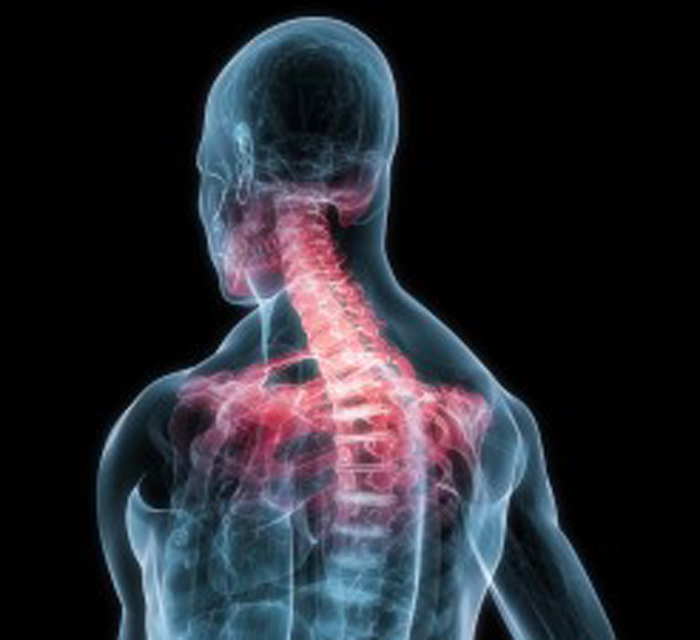Metabolic Syndrome Components Are Associated with Intervertebral Disc Degeneration: The Wakayama Spine Study
SOURCE: PLoS One. 2016 (Feb 3); 11 (2): e0147565 ~ FULL TEXT
Masatoshi Teraguchi, Noriko Yoshimura,
Hiroshi Hashizume, Shigeyuki Muraki, et al
Department of Orthopaedic surgery,
Wakayama Medical University,
811-1 Kimiidera,
Wakayama, 641-8509, Japan.
OBJECTIVE: The objective of the present study was to examine the associations between metabolic syndrome (MS) components, such as overweight (OW), hypertension (HT), dyslipidemia (DL), and impaired glucose tolerance (IGT), and intervertebral disc degeneration (DD).
DESIGN: The present study included 928 participants (308 men, 620 women) of the 1,011 participants in the Wakayama Spine Study. DD on magnetic resonance imaging was classified according to the Pfirrmann system. OW, HT, DL, and IGT were assessed using the criteria of the Examination Committee of Criteria for MS in Japan.
RESULTS: Multivariable logistic regression analysis revealed that OW was significantly associated with cervical, thoracic, and lumbar DD (cervical: odds ratio [OR], 1.28; 95% confidence interval [CI], 0.92-1.78; thoracic: OR, 1.75; 95% CI, 1.24-2.51; lumbar: OR, 1.87; 95% CI, 1.06-3.48). HT and IGT were significantly associated with thoracic DD (HT: OR, 1.54; 95% CI, 1.09-2.18; IGT: OR, 1.65; 95% CI, 1.12-2.48). Furthermore, subjects with 1 or more MS components had a higher OR for thoracic DD compared with those without MS components (vs. no component; 1 component: OR, 1.58; 95% CI, 1.03-2.42; 2 components: OR, 2.60; 95% CI, 1.62-4.20; ≥3 components: OR, 2.62; 95% CI, 1.42-5.00).
There are more articles like this @ our:
CONCLUSION: Metabolic Syndrome (MS) components were significantly associated with thoracic intervertebral disc degeneration (DD). Furthermore, accumulation of MS components significantly increased the odds ratio [OR] for thoracic DD. These findings support the need for further studies of the effects of metabolic abnormality on DD.
From the FULL TEXT Article:
Introduction
Intervertebral disc degeneration (DD) is generally considered as the first step of spinal change and undergoes destructive changes with age. It is typically followed by the loss of water and proteoglycan content of the nucleus, annulus tears, gradual formation of osteophytes, disc narrowing, and spinal canal stenosis [1, 2], and low back pain [3–6], is a major public health problem that negatively influences activities of daily living and quality of life in those affected. The number of patients with degenerative disease of the spine is increasing [6], thereby causing medical expenses to rise. In spite of these situation, the cause of DD is not fully understood.
Because the etiology of DD exclude aging remains poorly understood. Accordingly, we need to clarify which risk factors promote DD to establish preventive measures against DD. In the present study, we focused on metabolic syndrome (MS) component, such as overweight (OW), hypertension (HT), dyslipidemia (DL), and impaired glucose tolerance (IGT), because MS component has some influence on atherosclerosis [7] and accumulation of MS component increase the risk of atherosclerosis events. [8] MS may increase not only the risk of cardiovascular events but also the risk of DD in the whole body [9], because intervertebral discs, which are structures with precarious nutrient supply at tissue level throughout the whole body, may suffer and gradually degenerate as a consequence of failure of nutrient supply to disc cells. [10, 11]
However the association between MS component and DD remains controversial. [9] In some previous epidemiologic studies, OW [6, 12–16], DL [16], and IGT [17] were found to be associated with DD in the lumbar region. Other studies, however, have found no clear associations between hypertension (HT) [9], IGT [9, 16], and DL [9, 18], and DD in the lumbar region. This may be due to the limitation of potential biases related to patient selection and the consequences of disease on behavior. Furthermore, the majority of epidemiologic investigations have focused only on the lumbar spine.
We believe that analysis of DD in the entire spine would provide more useful data than that of DD in only the lumbar region. Since the cervical and lumbar regions comprise mobile segments, the intervertebral discs in these regions are easily affected by mechanical and motion stress; thus, the effects of certain factors imposed on all intervertebral discs equally, such as age and endogenic factors, might be masked. In contrast, the thoracic region is stabilized by the thoracic cage, which reduces mechanical stress imposed on the intervertebral discs. We conducted a thorough literature review and found no studies of associations between component of MS and DD that focused on a population-based analysis using whole-spine magnetic resonance imaging (MRI).
Read the rest of this Full Text article now!



Leave A Comment